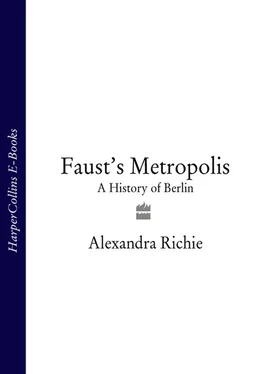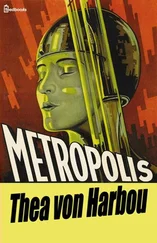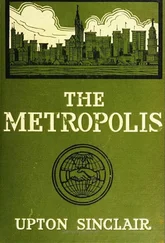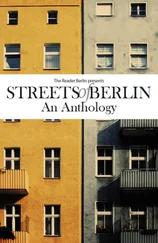The taking of Brandenburg broke the power of the Hevellian Slavic princes and it had a profound effect on the future of the Berlin area. Spandau became Albert’s property; the first Christian graves there date from 1150 and the first Ascanian governor, Albert’s son Margrave Otto II, was appointed in 1197. In 1241 Margrave Johann I took Köpenick from the Wettiner Markgraf von Meissen along with all the properties belonging to the Sprewans and built a new fortress which became a powerful administrative centre. Johann was a fierce fighter and extended his power far to the east, even seizing Gdansk from the Poles between 1266 and 1271, the first of many Polish – German conflicts over that city. By 1319 Albert’s Ascanian successors had extended their authority over territory stretching nearly 200 miles east of the Elbe. The land around Berlin had become an integral part of Germany.
The high Middle Ages was a time of extraordinary transformation and resettlement across Europe, a period when untold numbers of people made their way to new regions often thousands of miles from their birthplaces. 52Settlers moved into the Celtic lands, along the Mediterranean and to the Oder; they moved from England to Ireland, from Saxony to Livonia, from Old Castile to Andalusia, and they transformed the Iberian peninsula from Muslim into Christian land. But of all the migrations of the twelfth and thirteenth centuries it was the Ostsiedlung , the Germanization of lands east of the Elbe, which was the most overwhelming; indeed it was so complete that by the end of the thirteenth century much of central and eastern Europe from Estonia to the Carpathians was inhabited by German farmers, merchants, miners, traders, churchmen and aristocrats, culminating in the conquest of Livonia by the Knights of the Sword of Livonia and of East Prussia by the Teutonic Knights. The newcomers transformed the east as comprehensively as the Normans did England after the invasion of 1066, and after generations many came to believe that the land which they now inhabited had ‘always’ been German.
The first people to colonize an area were often representatives of the Church. The pagans were not always willing converts and pockets of heathenism remained for centuries. The missionary Boso, bishop of Merseburg, translated the Kyrie eleison into Slavonic so that it could be understood by them, but the Slavs ‘being sacrilegious, derisively changed it to ukrivolsa which was bad, since [in their language] it means “There is an alder-tree in the copse” ‘. 53But changing the words of the Kyrie would not save the pagans, who faced a cultural revolution of epic proportions.
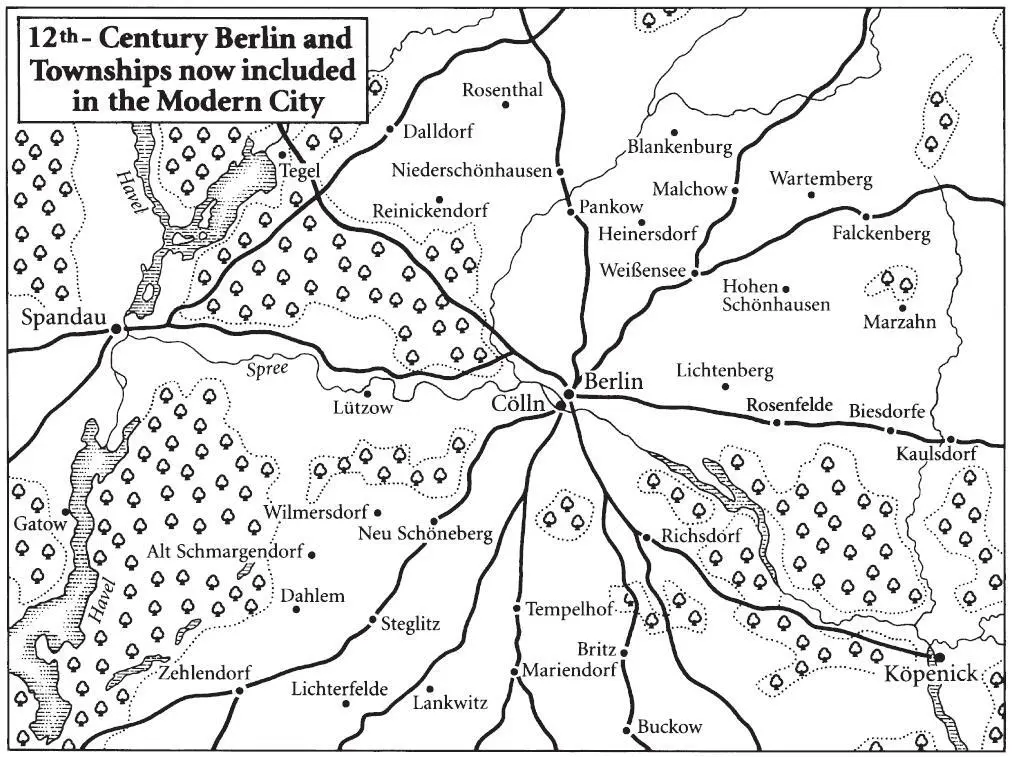
The churches were far mightier than the pagans could have realized and were granted enormous expanses of land and immunity from royal interference so long as they collected taxes and remained loyal to the emperor. The Christianization of the territory was marked by the spread of churches, and many cities can trace their origins back to the foundation of a monastery or bishopric. Their influence was incalculable. It was they who brought a Roman-inspired model of civilization to the area; it was they who transformed the region from an oral to a written culture; it was they who brought western arts and letters to the east and who taught grammar and rhetoric, arithmetic and geometry, music and astronomy and even practical subjects like the fortification of cities and the creation of markets. The transformation of the Mark Brandenburg into a part of the modern Europe began above all with the coming of the great religious orders.
The first to appear were members of the Premonstratensian Order sent by St Norbert of Magdeburg. Named after their mother house Prémontré near Laon, the monks of the order saw it as their duty to go amongst the heathen and convert them by preaching, hearing confession and administering the sacraments. They were often the first Christians to come into contact with the remote Slavic peoples in the Mark Brandenburg but were joined in the thirteenth century by the Cistercians, an order named in 1098 after the abbey of Cîteaux in French Burgundy. The Cistercians were enormously successful precisely because they looked upon the conversion of the heathen Slavs as an extension of the Crusades – as a true Holy War. Some have argued that the most powerful man in the second half of the twelfth century was neither the pope nor the Holy Roman Emperor but the famous Cistercian Bernard, abbot of Clairvaux, who had persuaded the pope to reward those Christians who fought in the north with the same indulgences and dispensations as were granted to the Crusaders in the south. 54
The Cistercians might have chosen lonely wooded spots for their monasteries but they were part of a highly sophisticated organization which controlled much of Europe. Each was part of an interdependent network of houses which stretched from Ireland to Norway to Poland and which promulgated everything from religious instruction to reading and writing. The Cistercians created this network by moving on to grants of territory, often in the region of 6,000 hufe – around 180,000 acres – where they would build a monastery and drain the land. After this they would plan out a village, complete with houses arranged symmetrically along a straight road and with fields divided into rectangular blocks. Many towns around Berlin owe their origins to the order, including Heiligengrabe, Chorin – which in 1273 built the first brick monastery of the Mark Brandenburg – and Lehnin, whose beautiful Ottonian church became the house monastery and burial site of the Ascanians and which was, for a time, the wealthiest town in the Mark. 55
The Cistercians were not the only order to become powerful in the Mark Brandenburg: the Franciscans and the Dominicans were active, and the town of Angermünde grew around Franciscan monasteries which were in turn protected by the margraves of Brandenburg. Religious orders created a number of districts which still exist; in 1344, for example, the grand master of the Order of St John asked Johannes Reiche to create a settlement called Marienfelde in what is now part of Berlin; Reiche was given the estate in perpetuity on the understanding that he would govern in the name of the Church. It is a common misconception that the knights and the religious orders were intent on erasing the heathen from the land or, as one commentator put it, that they completed ‘the region’s first Holocaust’. 56There is no doubt that the first wave of conversions was often brutal but the notion that the knights ‘waged something akin to a twentieth-century war of extermination’ is inaccurate: after the regions were conquered the rulers were prepared to grant the local people generous terms to live and work on their land – it made economic sense to do so. 57This was particularly true of the Mark Brandenburg, where the Slavs were encouraged to stay and prosper as long as they converted to Christianity. Most Wends were permitted to retain their own language; indeed even Otto I had command of both the German and Slav languages. It was not uncommon for Slav and German nobles to intermarry, and families like the barons von Plotho from Kyritz can trace their ancestry back to Slavic Wendish princes while half the wives of the first sixteen marriages of Albert the Bear’s family were of Wendish descent. 58Groups of Wends also moved into separate villages or Kietze , some of which, like Spreewald, survived into the twentieth century with their culture intact. 59For Albert the main problem was not that his population was Slavic, but that it was too small. If the area was to prosper it needed settlers.
Читать дальше
